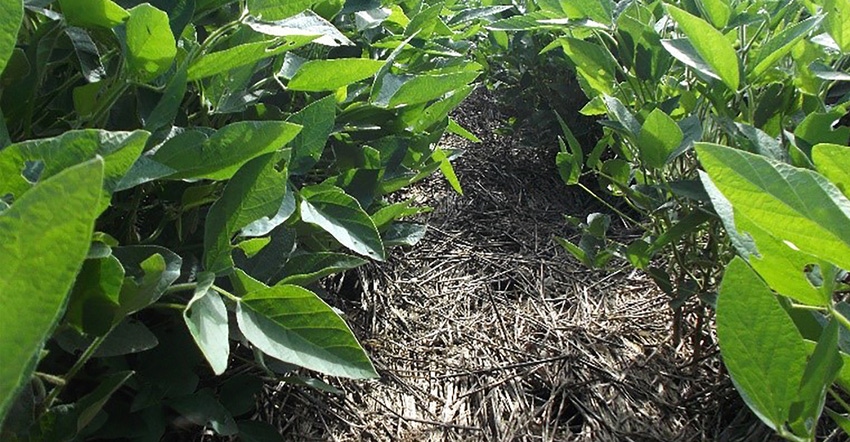January 15, 2019

By Andrea Basche
How well do cover crops control weeds, and can they offset herbicide costs in corn-soybean cropping systems across the Corn Belt? The University of Nebraska-Lincoln is working on a meta-analysis to answer these questions.
A meta-analysis is a quantitative, systematic method to synthesize prior research. The power of this kind of analysis is that it allows researchers to investigate overall trends of a particular treatment by combining results from many experiments.
UNL has analyzed results from 15 experiments across nine states (see chart below), including one in Nebraska. To be included in the analysis, experiments needed to fit specific criteria:
A fall-planted cover crop was grown before corn or soybean.
All other management — minus the inclusion of a winter cover crop — needed to remain constant.
The experiment was located within one of the top corn- and soybean-producing states in the Midwest.

EXPERIMENTS UNDER COVER: Experimental locations included in a systematic review of weed control from cover crops in the Corn Belt. Cover crops were more effective at reducing weed biomass compared to weed density, which could contribute to improving the efficacy of an herbicide program. (Source: UNL CropWatch)

Across the Corn Belt, experiments show that cover crops are generally more effective at reducing weed biomass (size of weeds) compared to weed density (the amount of weeds). This suggests that cover crops may be more beneficial from the standpoint of controlling the size of weeds, and therefore the efficacy of a herbicide program.
Cover crop termination method impacted the efficacy of the cover crop to control weeds. Experiments that used herbicides or a combination of herbicides and mowing to terminate the cover crop, or where cover crops were winter-killed were found to be more effective at weed control than cover crops terminated solely by crimping or mowing.
When a cover crop preceded corn, cover crop biomass of about 3,500 pounds per acre tended to consistently reduce weed biomass and weed density. When a cover crop preceded soybeans, results were variable. Some experiments showed significant weed control with smaller amounts of cover crop biomass (less than 1,000 pounds per acre), while others had ineffective weed control with smaller or larger amounts of cover crop biomass before soybean.
Experiments included in the analysis used grass, legume and mixed cover crop species. Differences in the efficacy of weed control with different cover crop species were not found. Likewise, differences were not found in weed control if an experiment planted corn or soybean following the cover crop.
Covers in Nebraska
The Nebraska study included in the analysis was conducted at the West Central Research and Extension Center at North Platte and on a nearby producer’s field from 2016 to 2017. Both sites were under no-till, irrigated, continuous corn management.
Researchers found between 3,300 and 3,600 pounds per acre of rye biomass reduced both weed density and weed biomass by more than 90%. Cover crops were planted from mid-September to mid-October in these experiments and were terminated with herbicides in mid-April.
Research collected from 2015 to 2017 at the South Central Agricultural Laboratory near Clay Center found that cereal rye cover crop growth ranged from 600 to more than 5,000 pounds per acre when planted between late September and late October.
The earlier-planted rye, which always produced the highest amounts of biomass, was following an early- or medium-maturity corn hybrid. This work did not find yield differences between medium – (97-day) and late-maturity (111-115-day) corn hybrids.
Basche is an assistant professor of Cropping Systems at the University of Nebraska-Lincoln. This report comes from UNL CropWatch, which is solely responsible for the information provided and is wholly owned by the source. Informa Business Media and all its subsidiaries are not responsible for any of the content contained in this information asset.
You May Also Like




